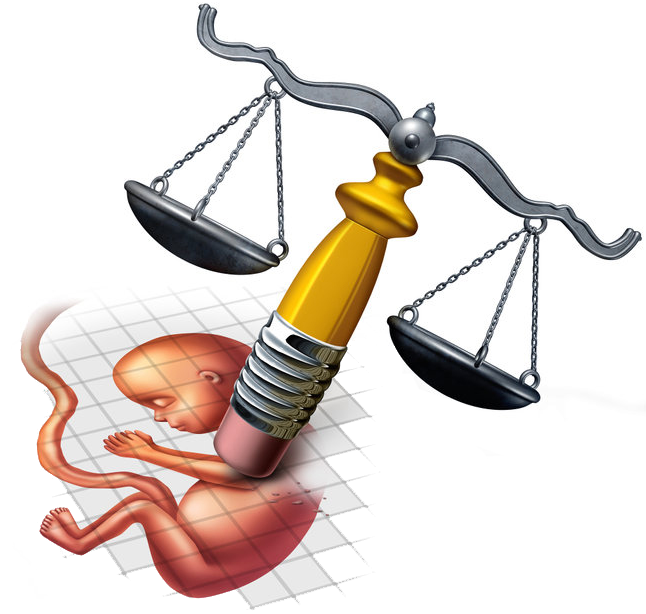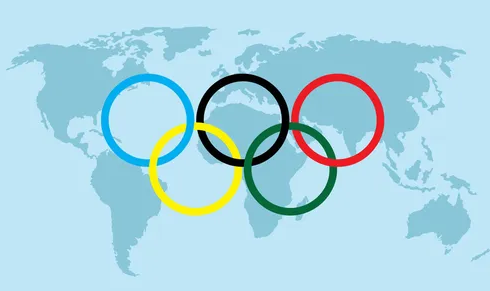
16-10-2023 (Important News Clippings)
To Download Click Here.
 Date:16-10-23
Date:16-10-23
Beyond The Strip
If civilian suffering in Gaza is not reversed, chances of a wider Middle East conflict are wider
TOI Editorials
Over the weekend, the crisis in Gaza worsened. The US sent a second aircraft carrier to the region as a deterrent even as Antony Blinken toured capitals there to prevent an escalation of the Israel-Hamas conflict. Separately, Israel’s military in a statement said that it will attack Gaza by land, air and sea. The portents are not good. The conflict has reached a stage where the risks of a spillover are increasing. Consequently, the Global South is once again vulnerable to an energy shock through higher hydrocarbon prices.
The attack by Hamas was unconscionable and Israel has every right to defend itself and bring the perpetrators to justice. But its approach so far has led to civilian casualties in Gaza, which can dilute the support it has received. The US has said that civilian casualties should be avoided and its priority is to create safe zones for them in Gaza. It’s a sensible goal as democracies cannot engage in collective punishment. Moreover, avoiding civilian casualties is an essential part of minimising the risk of escalation. The threat of US deterrence may work on state actors. But as civilians bear the brunt of conflict, it will get harder to check non-state actors or “lone-wolf” attacks.
In a tense atmosphere marked by distrust, escalation can be triggered by random incidents. Therefore, the US, which is a security provider to some parts of West Asia, needs to use its leverage to ring-fence civilians in Gaza. One way to start is to work with the UN to provide humanitarian aid. On October 14, the UN warned that Gaza runs the risk of running out of water as humanitarian aid had been blocked for a week. Working with Egypt and Israel to ensure that the most vulnerable segments of the population receive aid is an essential step the US should take.
We are now in the midst of two simultaneous conflicts when large parts of the world have not completed a full economic recovery from the pandemic. Another energy shock, on top of an existing debt crisis and the still-persistent inflation in rich countries, can have severe economic consequences. This, in turn, can undermine social and political stability. The cascading impact of the Israel-Hamas war should not be underestimated. Consequently, it’s important that the US and other regional powers use their leverage to limit the spillover effect of the conflict by shielding civilians caught in the crossfire.
Date:16-10-23
Games And Costs
Were India to host Olympics, a key metric should be whether the infra has post-event uses
TOI Editorials
The PM’s announcement at the IOC session in Mumbai that India will “leave no stone unturned” in its bid to host the 2036 Olympic Games gave substance to yearlong speculation. It is no surprise that India, which likely will be more than a $6 trilliondollar economy by 2035, should desire to host the prestigious sporting and infrastructure spectacle. The misgivings are equally legitimate: our cities are near-dumps, overpopulated, with little infrastructure maintenance, power and water woes, often littered with construction debris and choked by inefficient waste management. Can Ahmedabad – the much-speculated front runner – get Olympics-ready in 13 years? The next question is can we design the Games infrastructure such that the host city and country benefits economically.
Allocations to sports infrastructure will have to rise manifold over the next few years for India to be in the reckoning. Cost overruns for Olympic hosts are common, and India is a world-class performer in cost overruns. Games’ host cities are often left with white elephants – Sydney’s Olympic Stadium annually costs $30 million to run, Beijing’s iconic Bird’s Nest sits empty. Tokyo Olympics 2020 cost about $13 billion, and the city was hit by the postponement cost Covid entailed. Host cities have often rued bidding. London’s Olympics minister said, as the British economy nearly stalled, “Had we known what we know now, would we have bid for the Olympics? Almost certainly not.”
Both 1982 Asian Games and 2010 Commonwealth Games gave Delhi an infrastructure push – stadia and roads – but both were small compared to the Olympics with at least 30 events and athletes and officials from over 200 countries. Whichever city is developed as Olympics City, the test is how the event will help the host city in economic terms. If large public funds are to be committed, a conversion plan for future use is the starting point. The prestige then will endure.
Remove Abortion Barriers and Stigma
ET Editorials

Whichever way the proceedings go eventually, this is a seminal case, with many key ideas, such as foetal viability in abortion and the rights of an unborn child being discussed. But the larger question is: do most Indian women have access to safe abortion? No. While abortion is legal, mindless rules often create barriers. Besides, social stigma makes it challenging for women to exercise their rights. A 2021 National Law School of India University (NLSU) study says the law leaves the final decision on abortion to doctors. But doctors are not impervious to the notions of morality, shame and guilt. The Medical Termination of Pregnancy (MTP) Amendment Act, 2021, and the overlapping mandates of the Protection of Children from Sexual Offences Act and the Pre-Conception & Pre-Natal Diagnostic Techniques Act, also creates hurdles. Add to these an understaffed, illequipped healthcare system.
For safe, accessible abortion to become a reality, one must train and sensitise healthcare staff, improve awareness about the legality of abortion, and create pathways for women to get abortion services. And destigmatise abortion.
Olympian heights
India must be wary of the complexities of hosting the Olympiad
Editorial

Sporting-wise, it is clear that India wants to benefit from the strong tailwind produced by the stellar 107-medal show at the recently concluded Asian Games. Ever since Abhinav Bindra won the nation’s first-ever individual Olympic gold at Beijing 2008, there has been a steady uptick in performances at multi-disciplinary competitions. There is even a firm belief that India will win double-digit medals at Paris 2024. While such confidence is not entirely misplaced, conducting a mega event such as the Olympics presents a humongous challenge. Costs are often prohibitive, as seen from the fierce public outcry during both Rio 2016 and Tokyo 2020. In the case of Tokyo, the financial burden was said to have ballooned to $15.4 billion, more than double the initial estimate. Recently, the Australian state of Victoria pulled out of hosting the 2026 Commonwealth Games because of mounting expenditure and the Canadian province of Alberta withdrew a bid for the 2030 edition. To avoid being seen as a populist ephemera in a deeply unequal society, the IOC has moved away from the one-size-fits-all solution and now asks potential organisers to present projects that best fit their economic, social and environmental realities. India’s success will depend on how it marries its aspirations with the inherent complexities.
एआई तकनीक से क्या नया धर्म भी बन सकता है
जसप्रीत बिंद्रा, तकनीक विशेषज्ञ
मैं पिछले महीने देश के एक प्रतिष्ठित स्कूल में छात्रों व शिक्षकों से जेनरेटिव एआई (उत्पादक कृत्रिम बुद्धिमत्ता) पर बात कर रहा था। वहां पूछे गए एक सवाल ने मुझे सोचने पर मजबूर कर दिया। प्रश्न था, धार्मिक और वैचारिक आधार पर बंटी इस दुनिया में क्या एआई तकनीक हमें कोई ऐसा नया धर्म बनाने में मदद कर सकती है, जिसमें सबकी आस्था हो? यह किसी भी बुद्धिमत्ता के लिए एक ऊंचा लक्ष्य है, भले ही वह कृत्रिम ही क्यों न हो, लेकिन क्या एआई से उन समस्याओं का समाधान नहीं किया जाना चाहिए, जिनसे मानव ने हार मान ली है, जैसे- वैश्विक गरमी, वैश्विक भूख और धार्मिक विभाजन?
इस मामले में कई अलग तरह के प्रयास होते रहे हैं। सन् 1582 में मुगल बादशाह अकबर ने एक नए मजहब ‘दीन-ए-इलाही’ को शुरू किया था। बहाइयों ने इस्लाम, ईसाई व अन्य धर्मों के तत्वों को जोड़ने का प्रयास किया। यूनिटेरियन यूनिवर्सलिज्म धार्मिक विविधता की वकालत करती थी। थियॉसोफी और सिख धर्म में भी ऐसा ही था। इनके पवित्र ग्रंथ में हिंदू, इस्लाम और कबीर के दोहों के तत्व हैं। जाहिर है, तकनीक और धर्म एक असरकारी कॉकटेल हो सकता है, जिसे एआई तकनीक और अधिक मादक बना सकती है। चैटजीपीटी जैसे एलएलएम के आगमन ने उद्यमियों को धार्मिक ग्रंथों की व्याख्या करने के लिए एआई का उपयोग करने को प्रेरित किया है। इसमें हिंदू धर्म की भगवद्गीता सबकी पसंदीदा बनकर उभरी है। सुकारु साई विनीत ने गीताजीपीटी बनाया है और सैम्यौ गर्ग ने भगवद्गीता डॉट आईओ। गीताजीपीटी उपयोगकर्ताओं को गीता से जुड़े सवाल पूछने की और उससे अपने जीवन की समस्याओं को हल करने की सुविधा देता है। इसी तरह, एक अन्य मजहब में, कुरानजीपीटी और हदीसजीपीटी को यह दिखाने के लक्ष्य के साथ बनाया गया कि इस्लाम शांति, प्रेम और भाईचारे की सीख देता है। ईसाई धर्म के लिए बाइबिलचैट, तो सिख धर्म में ग्रंथ साहिब के लिए जीपीटीसाहिब बनाया गया है।
एआई से न सिर्फ धार्मिक ग्रंथों के लिए चैटबॉट बनाया जा रहा है, बल्कि धार्मिक विद्वान व धर्मगुरु यह भी पता लगा रहे हैं कि इस नई तकनीक का किस तरह उपयोग किया जाए? गार्जियन की रिपोर्ट कहती है कि रब्बी जोशुआ फ्रैंकलिन चैटजीपीटी का उपयोग करके आत्मीयता और अति-संवेदनशीलता पर 1,000 शब्दों का उपदेश तैयार कर रहे हैं। फाइनेंशियल टाइम्स क्यूम सेमिनरी के बारे में बताता है, जो यह देखने के लिए काम कर रहा है कि एआई को उनके मजहब के साथ कैसे जोड़ा जा सकता है। ‘एशराघ क्रिएटिविटी ऐंड इनोवेशन हाउस’ के प्रमुख मोहम्मद घोटबी कहते हैं, रोबोट वरिष्ठ मौलवियों की जगह नहीं ले सकते, लेकिन वे एक भरोसमंद सहायक हो सकते हैं, जो उन्हें 50 दिनों के बजाय पांच घंटे में फतवा जारी करने में मदद कर सकते हैं। संयुक्त अरब अमीरात सरकार ने दो ताकतवर एलएलएम बनाए हैं, जो सीधे तौर पर तो मजहब से नहीं जुड़े, लेकिन अरब संस्कृति व मूल्यों को समेटे हुए हैं, जो बहुत कुछ मजहब के करीब हैं। सुकारु मानते हैं कि आजकल अकेलपान एक महामारी है और लोग अपने एकाकीपन के समाधान के लिए गीताजीपीटी अपना रहे हैं। संभवत: धर्म के बड़े उद्देश्यों में एक यह भी था कि लोग चर्चों, मंदिरों, मस्जिदों में न केवल प्रार्थना के लिए आएं, बल्कि सामुदायिक संबंध और रिश्ते बनाने के लिए भी जुटें।
तो, क्या एआई तकनीक आदर्श रूप में धर्म तैयार कर सकती है? युवल हरारी इससे सहमत हैं। उनके मुताबिक, हजारों सालों से धर्मोपदेशक समाज को नया आकार देने के लिए भाषा और कथ्य का उपयोग करते रहे हैं, और हम यह जानते हैं कि जेनरेटिव एआई भी भाषा पर ही आधारित है। वास्तव में, यहां ‘थीटा नॉयर, पहले से है, जो खुद को नया धर्म कहता है। जो भी हो, मेरा यही मानना है कि जैसे ही हम इन बॉट्स को बनाएं, तो हमें यही मालूम हो कि वे प्यार, भाईचारे और मानवता की सेवा को व्यक्त कर रहे हैं। संभवत: एआई तकनीक ऐसा मत बना सकती है, जिसमें मानवता शामिल हो। इससे यह अपना सर्वोच्च लक्ष्य हासिल कर लेगी।
